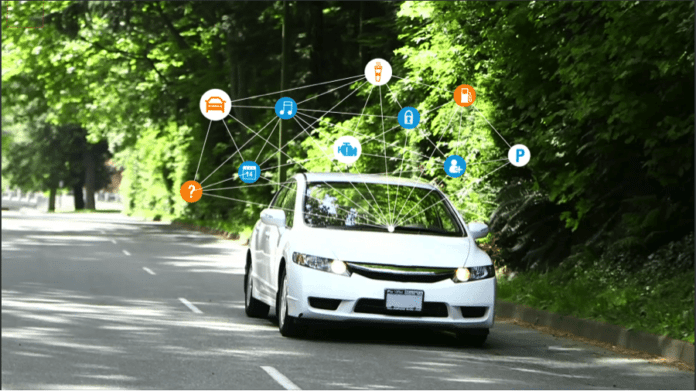For many years, vehicles have been running on software, relying on wireless networks to function, but those networks have been local and closed. With a car operating on a local network, you can’t use your cellphone, tap into your car’s wireless network, and access the internet. At least, not without a special device and a monthly fee.
Using software to control a vehicle’s functions isn’t new, but advancements in wireless technology are giving drivers less control over their cars, unbeknownst to drivers. Safety features like collision warning systems and automatic braking systems are hiding a secret that is both amazing and frightening.
Newer, high-end cars are being equipped with a complex wireless technology known as Dedicated Short-Range Communications (DSRC). This technology enables vehicles to communicate with each other on the road, without tapping into cell towers or any outside infrastructure.
Auto Talks describes this technology, stating “each vehicle sends 10 times per second its location, heading and speed in a secure and anonymous manner. All surrounding vehicles receive the message, and each estimates the risk imposed by the transmitting vehicle.” The risks are calculated and acted upon by safety applications like “Left Turn Assistance” and “Intersection Movement Assistance.”
Although this technology is reportedly encrypted and anonymous, there’s cause for concern. Vehicle software is already known to be hackable, with people having gained remote control of a car’s brakes and other functions. The pressing question is whether DSRC is necessary, or have we gone too far with wireless?
Wireless is unavoidably infiltrating our lives
No matter where you go, you can’t escape wireless technology. What started out as a way to get computers to communicate with each other without a tangled mess of wires has avalanched into a lifestyle you can’t avoid. As with every emerging technology, there are pros and cons. However, the pros and cons don’t always apply equally to every sector.
In some sectors, continual advancements in wireless technology are beneficial, for instance, education has probably received the largest benefit to date.
According to the 2017 Distance Education Enrollment Report, more than six million people have enrolled in distance education and that number is growing. Public institutions account for 67.8% of distance students.
Budget cuts are quick to affect education, so wireless technology softens the blow without sacrificing access to education.
For example, the Smithsonian Environmental Research Center in Edgewater, Maryland adopted a wireless approach to education, placing cameras near the water’s edge. Students learned how to take water samples for testing without leaving their homes.
“We wanted to maintain the integrity of the education program, which focuses on learning about human impact on our environment,” Mark Haddon, Director of Education told IVCi, “so we were particularly interested in bringing the students right to the site of the research for maximum effect and an enhanced educational experience.”
Their program also features video conferencing in a nearby forest and the wetlands, something that would cost educators and students plenty of money. Many interested parties wouldn’t be able to attend due to finances and other obligations.
While education thrives in the wake of wireless advancements, it’s causing concern in other industries, including posing an extraordinary threat to vehicle safety.
You’re not ultimately in control of your car
It’s been known for years that software-controlled functions can be hijacked. Shwetak Patel, a computer science professor at the University of Washington in Seattle spoke about those vulnerabilities with Lloyd Miller from the New York Times. Patel says it’s possible to disable a car’s brakes by inserting a CD with an infected MP3 file into the car’s CD player. The biggest problem, according to technologist Eben Moglen, is that “all of this is deeply nontransparent. And all of this is grounds for cheating of all sorts.”
Cheating is an understatement. In 2015, Volkswagen was caught running software on diesel vehicles that detected when it was undergoing an emissions test. The software altered the vehicle’s performance to pass with flying colors. The company did this because the car’s performance while driving regularly would not pass the test.
Cheating on emissions testing is the least of anyone’s worries. Once software becomes the primary method for controlling a vehicle, it’s more vulnerable than ever. It’s not only vulnerable to malfunctions within its system, but external threats from hackers become a serious threat. The newer the technology, the less secure it is.
Although many are concerned, DSRC looks like it’s here to stay. As older cars are removed from the road, someday smart vehicles will be our only choice for transportation.

